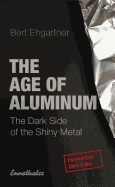One hundred years ago hardly anyone knew the first thing about this metal commonly found in the earth's crust. Today aluminium is ubiquitous. It would nowadays be unthinkable to have to make do without it in our daily lives. Aluminium is especially popular in the cosmetics industry - it helps to prevent sunscreen from congealing and facilitates its even distribution on the skin; in deodorants, it reacts with the cells of the skin and changes them so much that they can't produce sweat anymore; medicines for heartburn often contain a high proportion of aluminium; aluminium is included in two-thirds of all vaccines as an active amplifier; water companies use aluminium compounds to eradicate impurities and then supply our households with drinking water, which inevitably still contains traces of the metal.
However the findings of science bear thorough witness against the heedless use of aluminium in these most sensitive domains of life. Biologists have known for a long time that aluminium stunts plants' growth by destroying their roots and doctors working in most areas of health know about the neurotoxic properties of most aluminium compounds. In fact, it can be fatal to a developing nervous system. Aluminium is one of the most acute toxins for fish and even the lowest concentrations in water are lethal.
THE AGE OF ALUMINUM explores the metal's little-known darker side and reveals how aluminium exposure has triggered serious health consequences and environmental damage, despite representatives of the aluminium industry continuing to defend its safety record. The book calls for more research to be done on aluminium and human health and what can we do now to avoid its negative impact on our lives?


